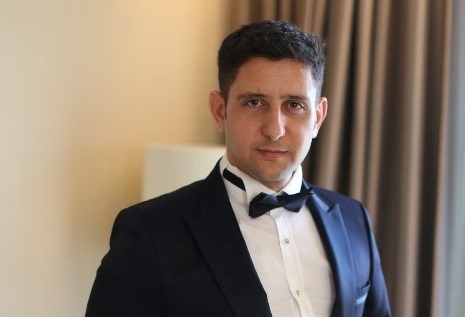
Near East University developed an artificial intelligence-based algorithm that determines the level of uptake of COVID-19 in the body through three-dimensional tomography images.
Artificial intelligence-based applications have a significant potential to make major changes in the traditional diagnosis and treatment processes of the health system. Near East University Faculty of Engineering Lecturer Assoc. Prof. Dr. Sertan Serte developed the artificial intelligence-based algorithm which determines the level of involvement of COVID-19 in the body through three-dimensional tomography images, and with this development, a new era in the diagnosis and treatment processes of COVID-19 is starting, too.
The most common methods used for the diagnosis of COVID-19 today are PCR and antigen kits. However, in the advanced stage, the definitive diagnosis of the disease is made through the patient’s lung tomography. Although three-dimensional tomographs vary according to the device that takes the tomography, they are formed by the combination of hundreds of frames. Therefore, it takes a long time to come to a conclusion by analyzing each frame individually through the human eye for each patient. In addition, when human interpretation is involved, the possible margin of error increases.
The artificial intelligence-based algorithm developed by Near East University Faculty of Engineering Lecturer Assoc. Prof. Dr. Sertan Serte, on the other hand, reveals the effects of SARS-CoV-2, which causes COVID-19, on the body in a much shorter time with high accuracy.
The scientific article prepared about the artificial intelligence-based algorithm developed by Assoc. Prof. Dr. Sertan Serte has also attracted the attention of the World Health Organization. at Eastern Mediterranean University. Dr. The article titled “Deep learning for diagnosis of COVID-19 using 3D CT scans” written by Near East University Faculty of Engineering Lecturer Assoc. Prof. Dr. Sertan Serte and Prof. Dr. Hasan Demirel from the Eastern Mediterranean University takes place in the section where the World Health Organization highlights the publications in the literature on COVID-19.

Assoc. Prof. Dr. Sertan Serte: “Thanks to the software that uses the artificial intelligence-based algorithm we have developed, radiologists and doctors will be able to plan the diagnosis and treatment process of COVID-19 much faster and by minimizing the margin of error.”
Emphasizing that many researchers within the Near East University are working on artificial intelligence-based applications, Near East University Faculty of Engineering Faculty Member Assoc. Prof. Dr. Sertan Serte says that he is also working on artificial intelligence-based applications that can be used in the field of health. Stating that they have shifted many projects they have been so far working on to the issue of COVID-19 to alleviate the effects of the pandemic, Assoc. Prof. Dr. Serte said “Thanks to the software that uses the artificial intelligence-based algorithm we have developed, radiologists and doctors will now be able to plan the diagnosis and treatment process of COVID-19 much faster and by minimizing the margin of error.”
Assoc. Prof. Dr. Özüm Tunçyürek: “Artificial intelligence-based applications, of which a very important example has been presented by Assoc. Prof. Dr. Sertan, will take over a large part of the workload, especially in the field of radiology, from people in the near future.”
Near East University Radiology Department Head of Department Assoc. Prof. Dr. Özüm Tunçyürek emphasizing that artificial intelligence-based applications will create radical changes in the diagnosis and treatment methods in the field of health, said artificial intelligence-based applications may take over a large part of the workload, especially in the field of radiology, from people in the near future. Assoc. Prof. Dr. Özüm Tunçyürek said, “At the beginning of the COVID-19 pandemic, radiologists did not have the experience to identify and diagnose the effects of this new disease. This experience was only achieved by observing the effects of the disease on people in time. Artificial intelligence applications do not need experience. Thus, artificial intelligence-based applications developed will be the greatest assistant of physicians in many fields, not only for COVID-19.”